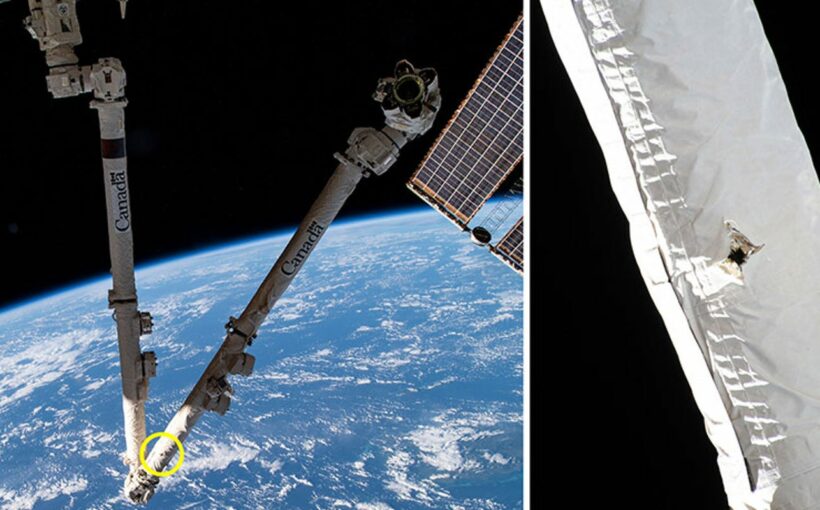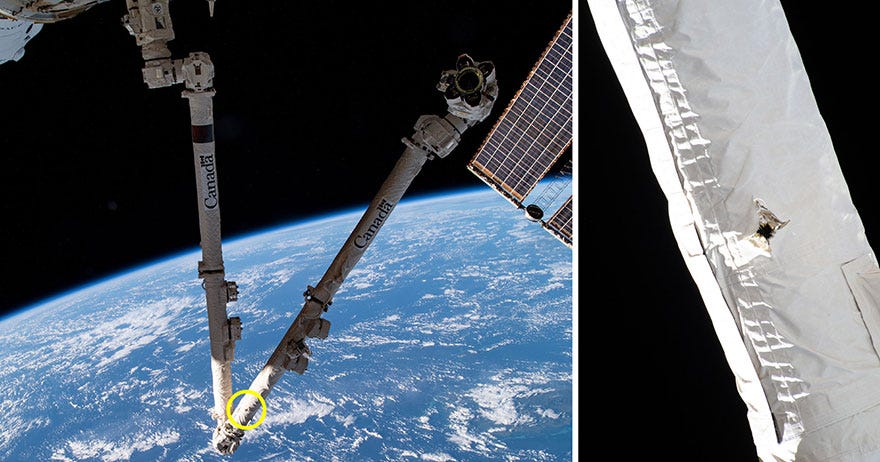In what the Canadian Space Agency is calling a “lucky strike,” the International Space Station’s robotic arm is still functioning after a piece of space junk smashed into it and left a small hole.
“Seriously, this shows the threat of orbital debris,” tweeted Gilles Leclerc, director general of the Canadian Space Agency, after the agency announced the strike on Friday.
The Canadian Space Agency did not say whether the debris was natural or manmade.
The Canadarm2 is a 57.7-foot-long robotic arm that was vital in assembling the orbiting lab, according to NASA. The iconic robotic arm is used to move supplies, equipment and astronauts, as well as to perform routine station maintenance and “cosmic catches” of vehicles visiting the ISS. It is part of Canada’s contribution to the ISS.
During a routine inspection on May 12, robotic operators observed the hole in the arm boom and protective thermal covering, according to a statement from the Canadian Space Agency last Friday. After working with NASA to take detailed images of the impact, the agencies concluded the hole is about 5 mm in diameter.
Close-up images of space debris damage on Canadarm2 on International Space Station. (Photo: NASA / Canadian Space Agency)
Despite the impact, the arm’s performance is unaffected, according to the Canadian Space Agency. In fact, the Canadarm2 is in the middle of a big job positioning its “robotic hand,” called Dextre, in order to replace a faulty power switchbox.
The space agency said over 23,000 objects the size of a softball or larger are tracked 24/7 to avoid collisions. Smaller objects, including rock or dust particles and flecks of paint from satellites, are too small to be monitored.
“Space can be a harsh and unforgiving environment for the robots and humans that explore it: the hazards are many, from massive temperature swings to radiation and orbital debris,” the Canadian Space Agency said.
With more stuff going to space, there’s also more trash in space — nearly 6,000 tons — and the likelihood of impacts are increasing.
NASA says low-Earth orbit is a space junk yard filled with millions of pieces of rockets, spacecraft and satellites flying at speeds up to 18,000 miles per hour.
All that junk orbiting Earth poses a significant safety risk to people and property in space and on Earth.
In 2020 the International Space Station had to redirect three times to avoid space debris. Prior to that, the last time a move was necessary was in 2015. This year there have been a couple of close calls before the collision in May.
Follow Rachael Joy on Twitter @Rachael_Joy.
Source: Read Full Article

